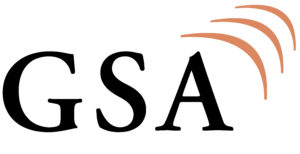Synchronisation frameworks & cross-border coordination
Synchronised operation for Macro-cellular and outdoor Micro-based networks
- Macro:
- The synchronised operation is the strongly recommended operating mode for Macro-cellular networks operating in the same area, since it avoids any BS-BS and UE-UE interferences therefore allowing coexistence between networks without the need for guard bands, additional filters or additional measures. This operating mode simplifies networks’ deployment because no additional interference mitigation is required
- The unsynchronised operation of Macro-cellular networks may be possible in the case of geographical isolation. The precise geographical separation that is needed depends on the specific frequency band (e.g. 60 km for co-channel and 14 km for adjacent channel would be needed in the 3.4-3.8 GHz band, as concluded in ECC Report 296).
- Micro:
- For the same reasons as for the macro case, the unsynchronised operation of Micro-cellular networks in the same geographic area is in many cases not feasible, except in some specific cases (e.g. Micro-only scenarios)
- Unsynchronised operation for Indoor BS networks could be carefully considered in specific cases
Under specific assumptions, an adjacent channel unsynchronized operation may be possible with careful installation and planning of the Indoor BSs (including the likely case of indoor BSs being deployed in areas which are also addressed with Macro-cellular coverage using adjacent channels) - Synchronised operation with LTE-TDD and/or WiMAX should be minimised
- Such an operation would lead to a significant latency performance degradation
- We therefore recommend limiting such an operation as much as possible by incentivising the migration of LTE-TDD networks to 5G-NR within the shortest possible time
- We recommend that any residual legacy WiMAX BS should be either cleared or refarmed to 5G-NR from the start
- National Synchronisation Frameworks
- Spectrum licensees are in the best position to select the most appropriate frame structure for them and to conduct negotiations with other licensees to reach agreement on a common frame structure
- Regulators may facilitate the setup of the synchronisation framework to ensure fair and timely frame structure agreements
- Cross-Border Coordination
- Synchronised operation between countries should be encouraged as much as possible
- We strongly recommend that administrations initiate effective cross-border coordination discussions with neighbouring countries considering the need for cross-border synchronisation while assessing the most suitable frame structure at national level. In addition, agreeing on a common phase clock reference is an important first step for a successful cross-border coordination
- Various actions could be put in place by operators in neighbouring countries to facilitate coexistence (e.g. Coordination based on preferential / non-preferential spectrum blocks, Coordination based on ”DL symbols blanking”, and/or traditional network planning techniques such as antenna tilting, power reduction, etc…). It is important to be aware of the benefits, applicability as well as the implications of such actions on a per-case basis.
- Additional considerations for the 2.6 GHz band
- A country is not recommended to allocate Band 7/Band 38 at the same time as Band 41 (LTE or NR) due to interference in the overlapping part of these spectrum bands
- In addition to the general mid-band TDD synchronisation recommendations that should also apply to the 2.6 GHz band, proper measures are needed for FDD/TDD coexistence, i.e. in cases where one country deploys TDD while a neighbouring country deploys FDD). An example of such measures is the introduction of geographical/frequency separation
Synchronisation frameworks & cross-border coordination

©GSA 2020
